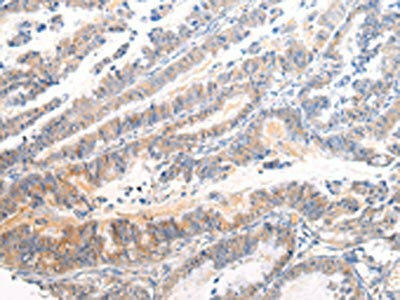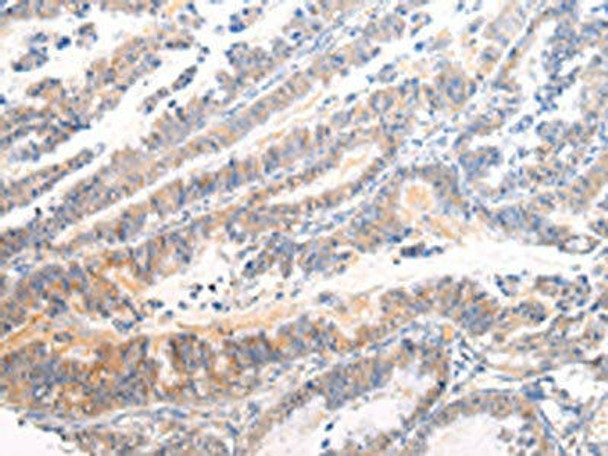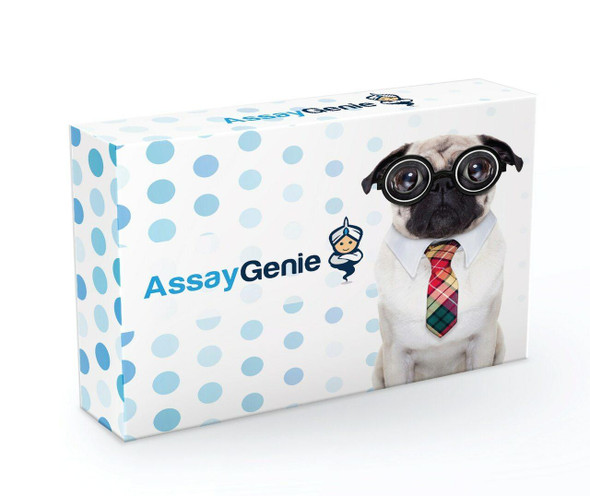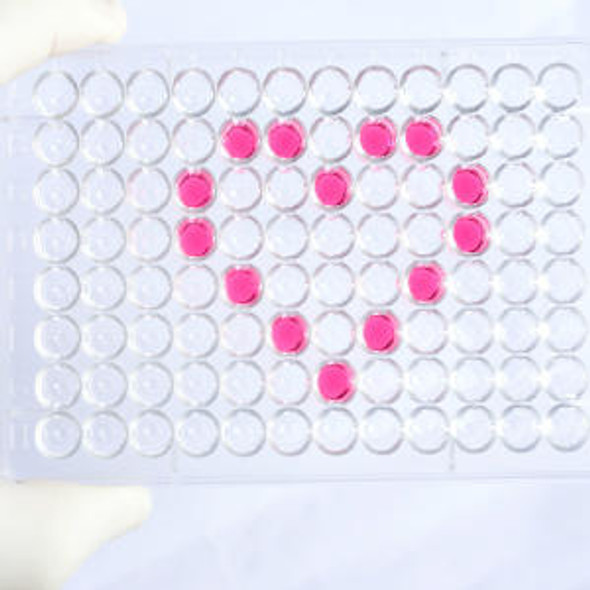Description
| Antibody Name: | APLN Antibody (PACO20971) |
| Antibody SKU: | PACO20971 |
| Size: | 50ul |
| Host Species: | Rabbit |
| Tested Applications: | ELISA, IHC |
| Recommended Dilutions: | ELISA:1:2000-1:5000, IHC:1:20-1:100 |
| Species Reactivity: | Human, Mouse, Rat |
| Immunogen: | Synthetic peptide of human APLN |
| Form: | Liquid |
| Storage Buffer: | -20°C, pH7.4 PBS, 0.05% NaN3, 40% Glycerol |
| Purification Method: | Antigen affinity purification |
| Clonality: | Polyclonal |
| Isotype: | IgG |
| Conjugate: | Non-conjugated |
 | The image on the left is immunohistochemistry of paraffin-embedded Human esophagus cancer tissue using PACO20971(APLN Antibody) at dilution 1/20, on the right is treated with synthetic peptide. (Original magnification: x200). |
 | The image on the left is immunohistochemistry of paraffin-embedded Human liver cancer tissue using PACO20971(APLN Antibody) at dilution 1/20, on the right is treated with synthetic peptide. (Original magnification: x200). |
| Background: | This gene encodes a peptide that functions as an endogenous ligand for the G protein coupled receptor APJ. The encoded protein is synthesized as a prepropeptide that is processed into biologically active C-terminal fragments. The peptide fragments activate different tissue specific signaling pathways that regulate diverse biological functions including fluid homeostasis, cardiovascular function and insulin secretion. This protein also functions as a coreceptor for the human immunodeficiency virus 1. |
| Synonyms: | apelin |
| UniProt Protein Function: | apelin: Endogenous ligand for APJ, an alternative coreceptor with CD4 for HIV-1 infection. Inhibits HIV-1 entry in cells coexpressing CD4 and APJ. Apelin-36 has a greater inhibitory activity on HIV infection than other synthetic apelin derivatives. The oral intake in the colostrum and the milk could have a role in the modulation of the immune responses in neonates. May also have a role in the central control of body fluid homeostasis by influencing AVP release and drinking behavior. Belongs to the apelin family. |
| UniProt Protein Details: | Protein type:Secreted; Secreted, signal peptide Chromosomal Location of Human Ortholog: Xq25 Cellular Component: extracellular space; extracellular region Molecular Function:G-protein-coupled receptor binding; hormone activity; apelin receptor binding; receptor binding Biological Process: lactation; immune response; signal transduction |
| NCBI Summary: | This gene encodes a peptide that functions as an endogenous ligand for the G protein coupled receptor APJ. The encoded protein is synthesized as a prepropeptide that is processed into biologically active C-terminal fragments. The peptide fragments activate different tissue specific signaling pathways that regulate diverse biological functions including fluid homeostasis, cardiovascular function and insulin secretion. This protein also functions as a coreceptor for the human immunodeficiency virus 1.[provided by RefSeq, Feb 2010] |
| UniProt Code: | Q9ULZ1 |
| NCBI GenInfo Identifier: | 20137569 |
| NCBI Gene ID: | 8862 |
| NCBI Accession: | Q9ULZ1.1 |
| UniProt Secondary Accession: | Q9ULZ1,Q4VY08, Q8WU89, |
| UniProt Related Accession: | Q9ULZ1 |
| Molecular Weight: | 8,569 Da |
| NCBI Full Name: | Apelin |
| NCBI Synonym Full Names: | apelin |
| NCBI Official Symbol: | APLN |
| NCBI Official Synonym Symbols: | APEL; XNPEP2 |
| NCBI Protein Information: | apelin; AGTRL1 ligand; APJ endogenous ligand |
| UniProt Protein Name: | Apelin |
| UniProt Synonym Protein Names: | APJ endogenous ligand |
| UniProt Gene Name: | APLN |
| UniProt Entry Name: | APEL_HUMAN |
| Antibodies | ELISA Kits |
| Anti-APLN Antibody (CAB18168) | Human Apelin ELISA Kit |
| APLN Antibody (PACO01877) | Human APLN (Apelin) ELISA Kit (HUES01662) |
| APLN Antibody (PACO07784) | Human Apelin (APLN) ELISA Kit |
| Secondary Antibody |
| Anti-HRP Goat Anti-Rabbit IgG (H+L) Antibody (CABS014) |
| Recommended Products |
| Anti-FITC Goat Anti-Rabbit IgG (H+L) Antibody (CABS011) |
| Anti-HRP-conjugated Beta Actin Antibody (CABC028) |






